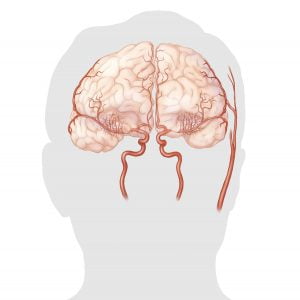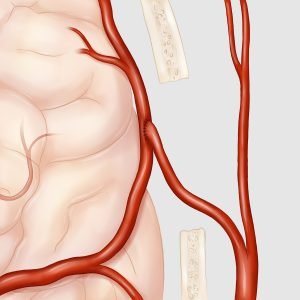Moyamoya Disease
What is it?
Moyamoya is a disease of the arteries in the brain. It results in a narrowing of the main blood vessels which supply the brain, such as the carotid artery. When these arteries narrow, patients may experience stroke or other symptoms of decreased blood supply to the brain.
How did I get it?
The cause of this disease is unknown, but we do know that it is more common in certain patient populations, for example in East Asian patients.
How is it diagnosed?
We diagnose Moyamoya disease using a special type of scan called an angiogram, which can be done with either a CT or MRI. Sometimes when considering surgical treatment, we will do a special type of scan called a CVR study. (CVR stands for ‘Cerebrovascular Reactivity’). This is simply a special type of MRI which is the equivalent of a ‘stress test’ of the brain. It looks at how the blood vessels in the brain respond to increased demands. This helps us decide if treatment is necessary.
Does Moyamoya need to be treated with surgery
In the revascularization clinic the team reviews your symptoms, findings on clinical exam, and imaging to give a recommendation about the best treatment for you. All patients receive medical treatment with certain types of medication to reduce the risk of stroke. Some patients continue having symptoms despite this medical therapy due to ongoing problems with the blood flow to the brain. We may then consider surgical treatment.
How is it treated surgically?
In order to increase the blood flow to the affected part of the brain, we can perform a ‘bypass’ procedure. This means using another blood vessel to ‘bypass’ the narrowed arteries, allowing blood to get to the affected areas of brain tissue. To do this, we use an artery which supplies the scalp, and connect it to the artery going to the affected part of the brain. This is called a ‘surgical bypass’ procedure. It is performed under general anaesthesia.
What happens after surgical treatment?
You will be in hospital for a few days after the procedure. We will always perform an angiogram afterwards to make sure the bypass is working well. We will then follow you up in clinic a few weeks later to make sure your symptoms are improving.


